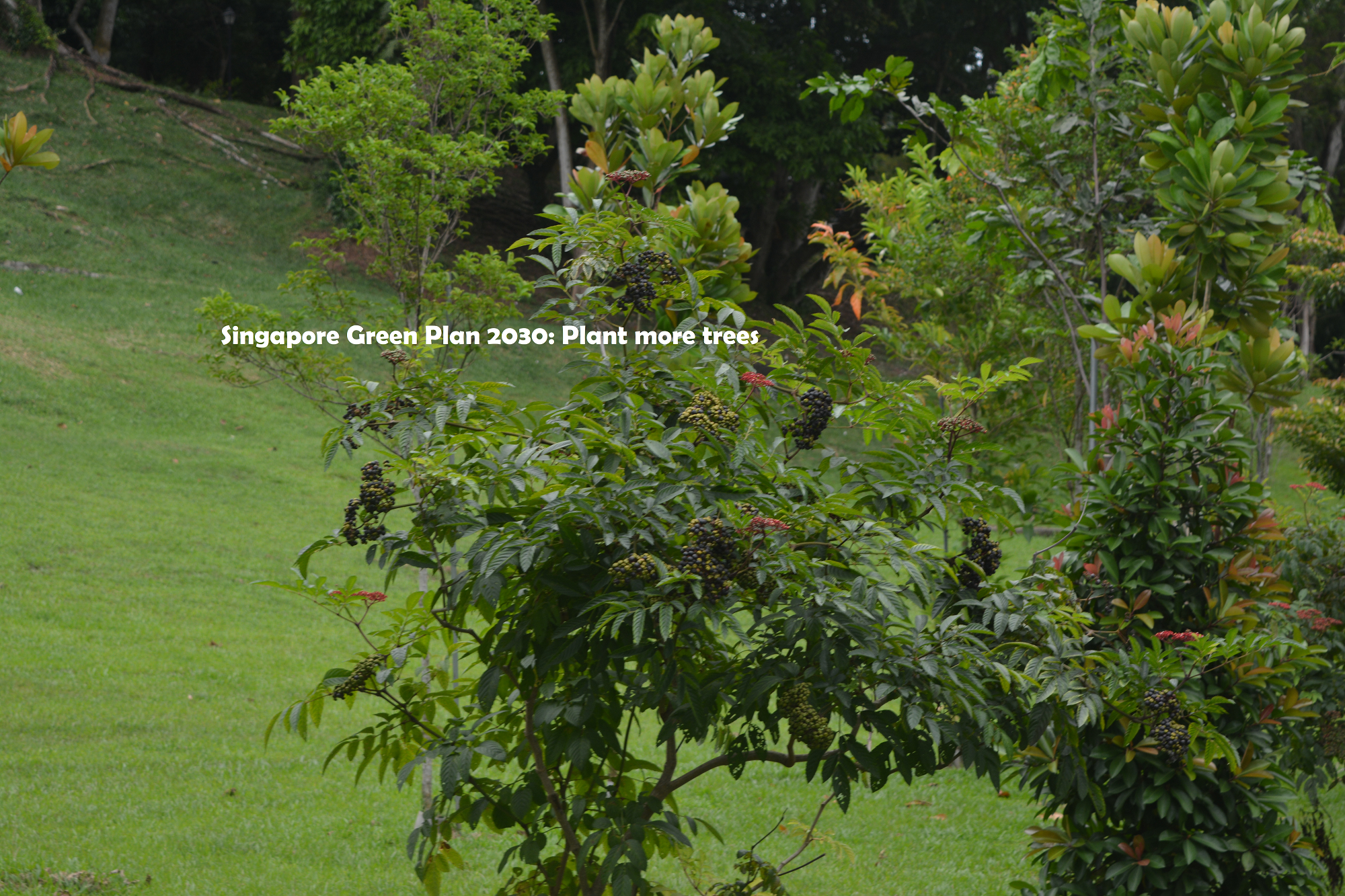Contents
Singapore Green Plan 2030
Introduction:
In recent years, the issue of climate change has emerged as one of the most important global challenges. As countries around the world recognize the urgent need to address this issue, Singapore has taken a bold step by launching the Singapore Green Plan 2030. The Singapore Green Plan 2030, also known as the Green Plan, is an initiative that aims to advance Singapore’s national agenda on sustainable development. Launched in February 2021, the Green Plan is a whole-of-nation movement that seeks to strengthen Singapore’s commitments under the UN’s 2030 Sustainable Development Agenda and Paris Agreement. Singapore aims to achieve sustainable growth and strengthen its ability to adapt to the consequences of global environmental issues. In this article, let’s look into the key components of the Singapore Green Plan 2030 and its significance in the global fight against climate change.
Key Targets:
The Green Plan’s key targets include:
- Plant 1 million more trees
- Quadruple solar energy deployment by 2025
- Reduce the waste sent to landfills by 30% by 2030
- At least 20% of schools will be carbon neutral by 2025
- 100% of new car registrations will be cleaner-energy models by 2030
- 80% of buildings will be Green Mark-certified by 2030
Five Ministries:
To achieve the above key targets, the Green Plan is led by five ministries. They include:
- The Ministries of Sustainability and the Environment (MSE),
- The Ministries of Trade and Industry (MTI),
- The Ministries of Transport (MOT),
- The Ministries of Education (MOE),
- The Ministries of National Development (MND).
These ministries, along with the whole government, are working together to drive sustainable development across various sectors and dimensions of Singaporean life. The plan also includes initiatives to develop Singapore as a green finance center, such as issuing S$35 billion of green bonds by 2030 to fund public sector green infrastructure projects. Singapore aims to be a model for the region and has been ranked ahead of all Asian countries in the 2021 Global Green Economy Index.
What are the Five Key Pillars to Singapore Green Plan 2030?
Singapore, being one of the world’s most densely populated countries, recognizes the importance of moving to a greener, more sustainable future. The Singapore Green Plan 2030 is built upon five key pillars that form the foundation of the country’s sustainable development agenda. These pillars include various aspects of Singaporean life and serve as guiding principles for achieving the targets set out in the Green Plan. The five key pillars of the Singapore Green Plan 2030 are:
- City in Nature
- Sustainable Living
- Energy Reset
- Green Economy
- Resilient Future
These five pillars provide a complete framework for Singapore’s sustainable development efforts and guide the implementation of various initiatives and policies under the Green Plan. By focusing on these pillars, Singapore aims to create a sustainable and resilient future for its citizens while contributing to global efforts to fight against climate change and achieve sustainable goals.
City in Nature:
This pillar focuses on enhancing Singapore’s green spaces and biodiversity. The goal is to create a green and beautiful “City in Nature” by 2030. Initiatives under this pillar include:
- Developing over 130 hectares of new parks and enhancing around 170 hectares of existing parks with more green vegetation and natural landscapes by 2026.
- Double the annual tree planting rate between 2020 and 2030 to plant 1 million more trees across Singapore.
- Increase nature parks’ land area by over 50% from 2020 baseline.
- A park within 10-minute walk from every household by 2030.
- Add 1,000 hectares of green space by 2030.
- Through these efforts, the plan seeks to bring nature closer to people and create a more sustainable city.
Sustainable Living:
- The second pillar of the Singapore Green Plan 2030 focuses on building a sustainable lifestyle. It emphasizes engaging citizens and communities to adopt sustainable practices in their daily lives. Key initiatives include:
- Reduce the amount of waste sent to landfills per capita per day by 20% by 2026.
- Develop an integrated waste and used water treatment facility that is 100% energy self-sufficient by 2030.
- Increase the domestic recycling rate to 70% by 2030.
- Reduce the water consumption rate to 130 litres per capita per day by 2030.
- The plan encourages eco-conscious choices through education, outreach programs, and incentives to reduce waste, conserve resources, and encourage environmentally sustainable lifestyles.
Energy Reset:
- This pillar addresses Singapore’s heavy reliance on fossil fuels and aims to transform into cleaner and more sustainable energy sources. Key targets include:
- Quadruple solar energy deployment by 2025.
- Increase the adoption of electric vehicles to at least 60,000 by 2030.
- Improve energy efficiency in buildings by at least 20% by 2030.
- Develop low-carbon energy solutions such as hydrogen and carbon capture, utilization, and storage.
This pillar seeks to increase the adoption of renewable energy, explore opportunities in green technology, and improve energy efficiency in various sectors.
Green Economy:
- The Green Economy seeks to develop Singapore as a green finance center and create new business opportunities in sustainable industries. The focus is on promoting green finance, sustainable tourism, and sustainable land transport. The aim is to position Singapore as a leader in the green economy. Key targets include:
- Issue S$19 billion of green bonds by 2025 to fund public-sector green infrastructure projects.
- Develop Singapore as a green finance center and promote green finance.
- Promote sustainable tourism and develop Singapore as a leading sustainable tourism destination.
- Develop sustainable land transport solutions and promote the adoption of cleaner vehicles
Resilient Future:
- In the face of rising sea levels and extreme weather events, the “Resilient Future” pillar focuses on building Singapore’s capacity to adapt to the impacts of climate change. This involves enhancing infrastructure resilience, conserving water resources, protecting biodiversity, and safeguarding natural habitats. Key targets include:
- Climate-proof critical infrastructure and buildings by 2030.
- Develop climate-resilient urban planning strategies.
- Enhance coastal protection measures and improve drainage systems.
- Develop a national climate adaptation plan.
By implementing nature-based solutions and sustainable urban planning, Singapore aims to ensure its resilience and readiness to face future environmental challenges.
International Collaboration:
Singapore’s Green Plan 2030 also emphasizes the importance of international collaboration. Recognizing that environmental issues are global in nature, Singapore aims to share knowledge, expertise, and best practices with other nations. Singapore actively participating in international efforts to fight against climate change. By creating partnerships and encouraging global cooperation, the plan seeks to maximize its impact on a broader scale.
Conclusion:
The Singapore Green Plan 2030 represents a significant commitment by the nation to address the urgent environmental challenges of the 21st century. By focusing on key objectives such as City in Nature, Sustainable Living, Energy Reset, Green Economy, and Resilient Future, Singapore aims to pave the way for a truly sustainable and resilient nation. By investing in sustainable practices, promoting eco-friendly technologies, and engaging its citizens, Singapore sets an example for other countries to follow. The plan’s success will not only benefit the nation itself but also contribute to the global fight against climate change and environmental degradation.
By investing in sustainable practices, promoting eco-friendly technologies, and engaging its citizens, Singapore sets an example for other countries to follow. The plan’s success will not only benefit the nation itself but also contribute to the global fight against climate change and environmental degradation. As the world struggles with the consequences of an unsustainable past, this Plan serves as a symbol of hope, providing a clear plan for building a greener and more sustainable world for future generations.

